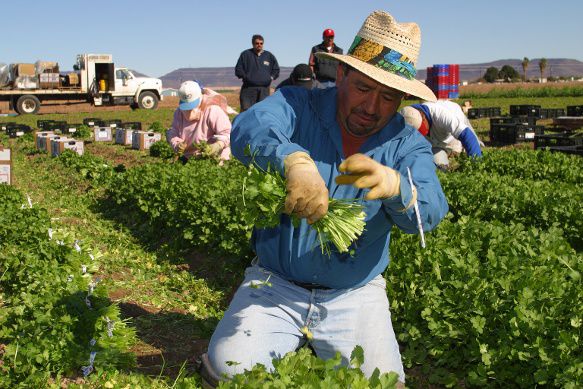Food Prices and Arizona Agriculture Economy Tied to Labor Reform
Published
2/11/2014
By American Farm Bureau Federation with Contributions by Julie Murphree, Arizona Farm Bureau: An approach to agricultural labor reform that focuses solely on immigration enforcement would raise food prices over five years by an additional 5 to 6 percent and would cut the nation’s food and fiber production by as much as a staggering $60 billion.

Those are among the results of a report, “Gauging the Farm Sector’s Sensitivity to Immigration Reform,” conducted by World Agricultural Economic and Environmental Services. The report was commissioned by the American Farm Bureau Federation (AFBF) and released in conjunction with the #ifarmimmigration grassroots campaign, a month-long campaign sponsored by AFBF and the Partnership for a New American Economy to promote the need for agricultural immigration reform.
By far, the best scenario for farm labor reform both for consumers and farmers is one that includes immigration enforcement, a redesigned guest worker program and the opportunity for skilled laborers currently working in agriculture to earn an adjustment of status. Under that scenario, there would be little to no effect on food prices, and the impact on farm income would be less than 1 percent.
“Arizona farmers have been asking for visa reform for over a decade,” explains Arizona Farm Bureau President Kevin Rogers. “We must have a way to grow and harvest our food; otherwise other countries will come along and do it for us. Enforcement without a worker program hurts Arizona’s agriculture industry.”
Today, U.S. agriculture depends heavily on workers who may have improper documentation with no viable means of verification. Regardless of the reform scenario studied, it is clear that a legal workforce comes at a price.
“Status quo is not a viable option for anyone involved in this issue, and as a nation, we expect better,” said American Farm Bureau Federation President Bob Stallman. “Farmers and ranchers recognize there are costs to ensuring they have a legal, stable workforce. And we are willing to step up to the plate.”
The hardest-hit domestic food sectors under an enforcement-only scenario are fruit production, which would plummet by 30 to 61 percent, and vegetable production, which would decline by 15 to 31 percent. The study also pointed out that while many consider fruit and vegetable production the most labor-reliant sector, livestock production in the U.S. would fall by 13-27 percent.
“Over five years, an enforcement-only approach would lead to losses in farm income large enough to trigger large scale restructuring of the sector, higher food prices, and greater dependence on imported products,” Stallman said.
“With a reworked guest worker program, and by allowing skilled laborers to earn an adjustment of status, food prices would remain stable and there would only be marginal impacts on production,” Stallman said. “It’s clear that we need greater enforcement, but those two key reforms must be included in the process.
Arizona Farm Bureau conducts a quarterly
“Agriculture must feed 9 billion people by 2050 with fewer resources available,” said Arizona Farm Bureau 1st Vice President Stefanie Smallhouse. “Our government should not make this more challenging than it has to be to meet this need by ignoring our labor problems. We’re trying to make our diets healthier for our children. With the increased food prices, will this cause families to opt out of eating more fruits and vegetables?”
“Most Americans believe that they have outgrown farm work, which is reflected in their unwillingness to take farm jobs, even temporarily,” said Stallman. “The bottom line of this study is that we either import our labor or we import our food.”
The study compared changes in farm output, commodity prices, farm income, farm asset values, and food prices across four generic reform alternatives. The study is posted